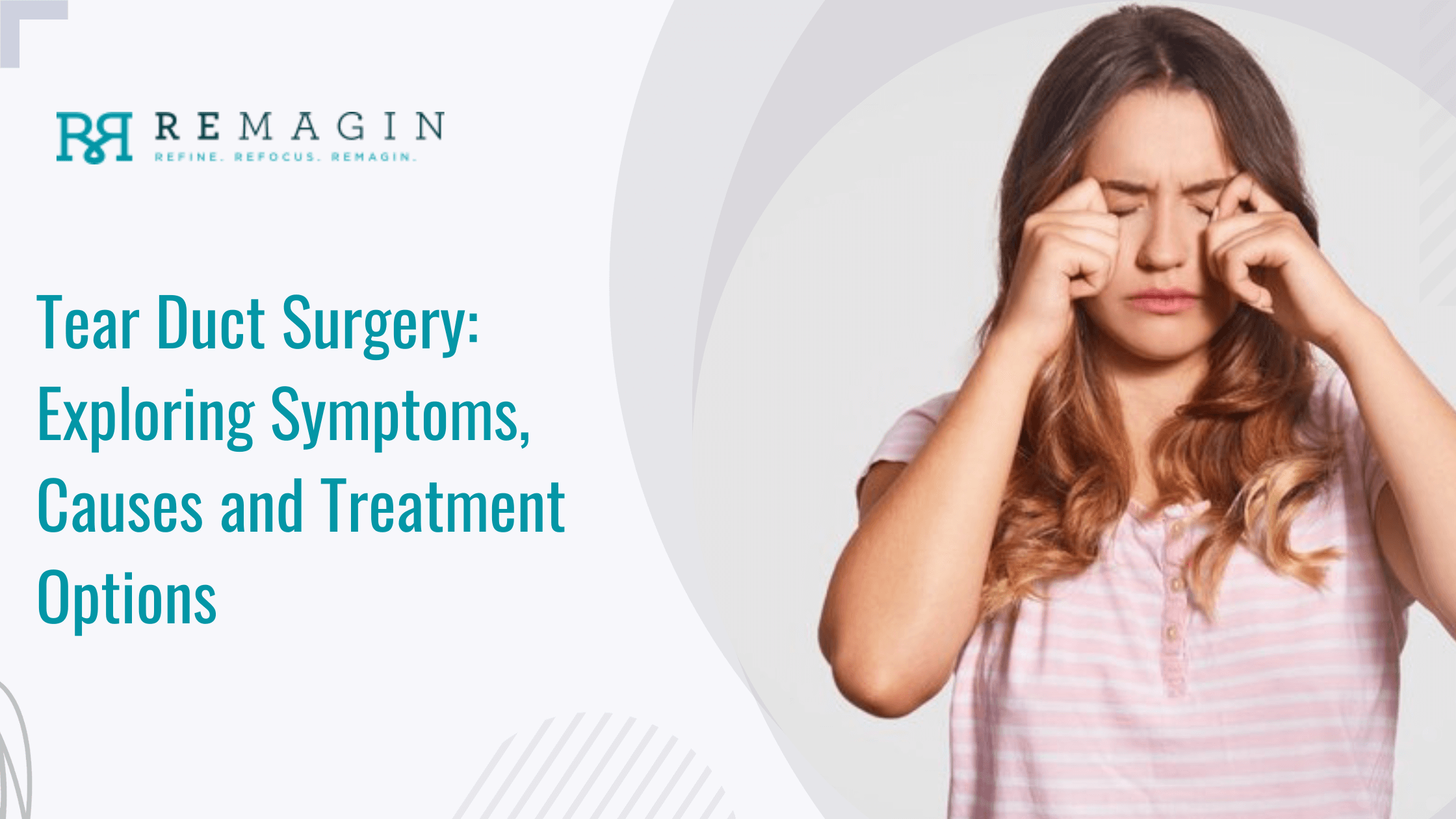When your eyes produce tears, they are drained through a small opening in the corner of your eye. The liquid then flows into your nose, where your body absorbs and eliminates it. However, if your nasal passages are obstructed, your tears cannot drain, and this condition is commonly known as nasolacrimal duct obstruction or a blocked tear duct.A blocked tear duct is common in newborns, with 6%-20% of infants exhibiting symptoms. On the other hand, a blocked tear duct in adults can result from an injury, infection, or a tumor but can be correctable with blocked tear duct surgery. This surgery can alleviate symptoms and restore proper tear drainage, providing long-lasting relief. Continue reading to learn more.
What Causes Blocked Tear Ducts?
The causes of blocked tear ducts are:
- Age-Related: As you age, puncta (drain openings) may narrow, causing blockage.
- Congenital: Some babies are born with abnormal tear ducts or tear ducts that are not fully developed.
- Eye Drops: Chronic eye drops used to treat glaucoma can result in blocked ducts.
- Inflammation or Infection: Chronic inflammation or infection of your tear duct system, eyes, or nose can cause blocked tear ducts.
- Tumor: A tumor in the nose or anywhere across the tear duct system can cause blockage.
- Cancer Treatments: Radiation or chemotherapy can block tear ducts.
- Trauma or Injury: Injury or trauma to the face can cause damage or scarring near the tear drainage system, disrupting the normal flow of tears.
What Are the Symptoms of a Clogged Tear Duct?
The following are the symptoms of a clogged tear duct -
- Blurred vision
- Redness in the white part of the eye
- Crusting of the eyelids
- Excessive tearing
- Recurrent pink eye (eye inflammation or infection)
- Painful swelling near the inside corner of the eye
- Pus or mucus discharge from the surface of the eye and eyelids
How Do Doctors Diagnose Blocked Tear Ducts?
Your ophthalmologist will examine your eyes, review your symptoms, and explore the inside of your nasal passages to identify any structural abnormalities causing an obstruction. Upon suspecting a blocked tear duct, your ophthalmologist may order the following tests:
- Tear Drainage Test: It involves putting one drop of a special dye on the surface of each eye to check how quickly your tears drain. If most of the dye is still on your eye surface even after five minutes, you may have a blocked tear duct.
- Irrigation and Probing: A saline solution is flushed via your tear drainage system to see whether it drains. Otherwise, a slender instrument may be inserted at the tiny drain holes (puncta) to check for clogs. In some cases, this probing may correct the problem.
- Eye Imaging Test: It involves passing a contrast dye on the puncta that travels through your tear drainage system. It will show up on a CT or MRI scan, helping your provider rule out the blockage's location and cause.
Treatment Options for Blocked Tear Duct
Your ophthalmologist may recommend any of the following treatments depending on the root cause of your blocked tear duct:
- Medication: It involves prescribing eye drops or oral medicines to treat blocked tear ducts caused by eye infections.
- Dilation, Probing, and Flushing: Your provider widens the drain holes at the corner of your eye and then inserts the small probe to send fluid to flush the tear ducts. It will help remove the blockages temporarily.
- Intubation or Stenting: Under general anesthesia, your provider will place a small tube (stent) through the puncta and then pass it to the tear duct system in your nose. The stent will stay there for at least three months.
- Balloon Catheter Dilation: Under general anesthesia, your provider will place a small tube containing a deflated balloon at the end through the tear duct blockage. Then, they will inflate and deflate the balloon to clear the clogs.
- Surgery: The surgery can be performed in one of two ways:
- External: Your surgeon will make an incision on the side of your nose and connect the lacrimal sac to your nasal cavity. Then, they will place a stent in the new passageway and close the incision with stitches.
- Endoscopic or Endonasal: Using a microscopic camera, your surgeon inserts tiny instruments through your duct system to locate and remove any obstruction. This method requires no incision, so it leaves no scar.
Final Thoughts
A blocked tear duct may seem a harmless issue. Still, if your tears don't drain properly, they remain stagnant, promoting the growth of fungus, bacteria, or viruses, causing infections and inflammation. So, if you experience any signs of a blocked tear duct, visit your eye specialist immediately for proper treatment.
Get Prompt and Professional Blocked Tear Duct Treatment at Remagin
If you are looking for a tear duct specialist near you to unblock your tear duct system, look no further than Remagin. Whether your tear ducts are blocked due to congenital issues, age-related, or other conditions/injuries, we can help treat them effectively, bidding a farewell to your endless tears. Contact us today for more information on our tear duct surgery.
FAQs
Is blocked tear duct surgery painful?
You won't feel pain or discomfort during the procedure as it is done under anesthesia.
How long does it take to recover from blocked tear duct surgery?
It can take a week or more to recover from the surgery. You should avoid blowing your nose and other routine activities for a week. Even after that, you must avoid activities that cause facial trauma.
Do clogged tear ducts hurt?
Yes, a blocked tear duct can cause pain and discomfort.



